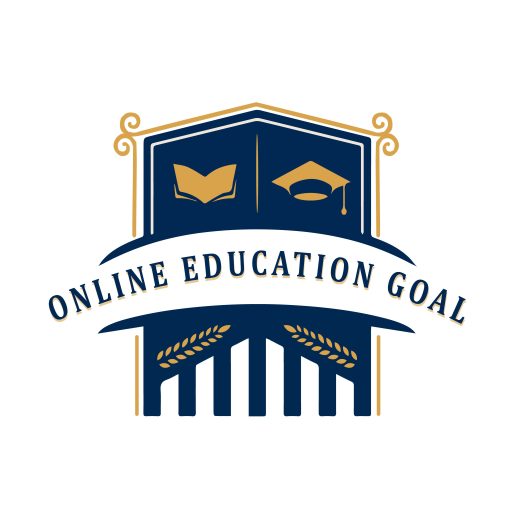Higher Education Marketing Strategies for Better Success
Higher education marketing strategies leverage digital platforms to engage prospective students. They must be data-driven and student-centric to succeed.
In the competitive landscape of higher education, institutions aim to stand out by crafting marketing strategies that resonate with their target audience. With the rise of online learning and a diverse student demographic, universities and colleges now prioritize innovative digital marketing techniques.
Developing a strong online presence, utilizing social media effectively, and creating compelling content are key elements in attracting potential students. Institutions tailor their approaches to address the needs and interests of prospective students, emphasizing the unique value, programs, and campus life they offer. Engaging storytelling, virtual tours, and testimonials form part of a comprehensive strategy to connect with students on a personal level and guide them through the decision-making process.
The Shift In Higher Education Marketing
The landscape of higher education marketing is rapidly evolving. As traditional methods become less effective, institutions must adapt to remain competitive. The shift towards digital mediums and brand storytelling reflects a new era in reaching prospective students. This change requires innovative strategies for engagement.
Embracing Digital Platforms
Colleges and universities now recognize the power of online reach. A digital presence is vital for connecting with tech-savvy students. Social media, online advertising, and SEO are key components. They help schools to meet students where they spend most of their time.
- Search Engine Optimization (SEO): Boosts visibility on search engines, attracting organic traffic.
- Content Marketing: Engages prospective students with informative and relevant resources.
- Social Media: Builds community and interacts directly with the target audience.
Videos and virtual tours are becoming essential as they provide an immersive experience. Web analytics offer deep insights into campaign effectiveness, helping to refine digital strategies.
Creating A Brand Identity
To stand out, higher education institutions must craft a compelling brand identity. This includes a distinct voice, consistent messaging, and a recognizable visual style. An authentic brand reflects the institution’s values and mission. It resonates with the right student demographic.
| Branding Element | Importance |
|---|---|
| Logo and Design: | First visual impression that captures attention. |
| Brand Voice: | Establishes a unique personality and tone. |
| Storytelling: | Connects emotionally with prospective students. |
Testimonials and success stories are powerful. They showcase the institution’s impact on real lives. Events, both on-campus and virtual, further broaden engagement opportunities. Consistent application across all platforms ensures a cohesive brand experience.

Targeting The Right Audience
Smart Higher Education Marketing Strategies hinge on knowing who will enroll. Reaching the perfect students starts with precise targeting. Universities and colleges must understand their prospective students deeply. Thus, they craft messages that resonate and spark action.
Demographic Analysis
Determining age, location, and education level forms the crux of demographic analysis. Colleges use this data to tailor campaigns that appeal to specific groups.
| Demographic Factor | Importance |
|---|---|
| Age | Matures marketing approach. |
| Location | Helps in localizing outreach. |
| Education | Aligns program offerings. |
Psychographic Profiling
Psychographic profiling dives deeper. It explores personalities, values, and lifestyles. This profiling helps institutions predict student behaviours and preferences.
- Interests: Reveals degree relevance.
- Goals: Connects with professional aspirations.
- Values: Matches institutional ethos with student beliefs.
Effective profiling creates compelling narratives. These stories connect with students on an emotional level.
Content Creation For Academic Appeal
In the world of higher education marketing, captivating content can bridge the gap between academic institutions and potential students. Through tailored and impactful content, universities can showcase their strengths, programs, and unique culture. Let’s explore how educational content and storytelling can enhance academic appeal.
Develop Educational Content
Compelling educational content forms the backbone of effective higher education marketing. Such content not only informs but also engages potential students and positions the institution as a thought leader.
- Identify Your Audience: Create content that resonates with prospective students, parents, and educators.
- Cover Diverse Topics: Write about academic programs, campus life, student success stories, and faculty research.
- Formats that Perform: Consider blog posts, eBooks, white papers, videos, and infographics.
Quality content SEO-optimized with relevant keywords can gain visibility in search engine results, drawing more attention to your institution’s offerings.
Use Storytelling Techniques
Stories captivate and connect with audiences on an emotional level. In the context of higher education, storytelling can bring your institution’s experiences and successes to life.
- Share Student Journeys: Highlight alumni achievements and current student experiences to inspire prospective students.
- Showcase Campus Events: Document the vibrancy of campus life through articles and videos of events and traditions.
- Faculty and Research: Detail ground-breaking research and innovative teaching approaches through engaging narratives.
Through stories, institutions can craft a unique identity that resonates deeply with students, encouraging them to envision their future at your campus.
Leveraging Social Media
Social media revolutionizes higher education marketing. It bridges the gap between institutions and students. Today’s digital era offers schools unique platforms to engage prospective students. These strategies turn social media into powerful tools for higher education marketing.
Engaging Students On Social Platforms
Student engagement on social media is crucial for visibility and connection. Here’s how to make an impact:
- Create relatable content that resonates with your audience.
- Use hashtags to maximize reach and foster community conversations.
- Run social media challenges and contests to boost interaction.
- Host live Q&A sessions with faculty and students.
- Share success stories of alumni to inspire potential students.
Showcasing Campus Life
A vibrant campus life can be a deciding factor for many students. Showcase this effectively through:
- Post high-quality photos and videos of campus events and daily life.
- Create virtual tours to give a real feel of the campus environment.
- Highlight student organizations and activities to show a diverse community.
- Feature testimonials from students that give a personal view of campus life.

Optimizing For Search Engines
Welcome to the digital age of higher education marketing. An essential element of your online presence is how easily potential students can find you through search engines. A well-optimized website attracts more visitors, and leads, potentially increasing enrolment rates.
Implement Seo Best Practices
SEO best practices ensure your institution stands out online. Here’s how:
- Research keywords related to academic programs and use them strategically.
- Optimize meta tags and headings for clear, descriptive information.
- Ensure mobile-friendliness. Google prioritizes mobile-first indexing.
- Maintain a fast-loading website. Page speed affects rankings and user experience.
- Use high-quality content to engage and inform prospective students.
- Build backlinks to increase authority and trust with search engines.
Understanding Search Intent
Kids, what’s search intent? It’s why someone searches online. It can be for facts, websites, or places to buy things.
| Type of Search Intent | What It Means |
|---|---|
| Informational | Looking for information. E.g., “What is a liberal arts degree?” |
| Navigational | Searching for a specific website. E.g., “University X homepage”. |
| Transactional | Ready to apply or buy. E.g., “Apply to University Y”. |
| Commercial Investigation | Comparing choices before deciding. E.g., “Best engineering schools”. |
Match your content to fit the searcher’s intent. This makes your site valuable and relevant.
Effective Use Of Paid Advertising
In the realm of higher education marketing, leveraging paid advertising plays a crucial role in reaching prospective students. Smart use of paid ads can greatly increase a school’s visibility and draw in a targeted audience. Crafting campaigns that resonate with potential applicants is essential. Universities must blend creativity with analytics to make the most of their advertising budget.
Exploring Pay-per-click Campaigns
Pay-Per-Click (PPC) campaigns are a powerful tool for schools to gain immediate exposure. With PPC, institutions bid on keywords related to their programs and offerings. Relevant ads then appear at the top of search engine results. This ensures ads reach people actively searching for education options.
- Keyword Research: Find the terms prospective students use.
- Ad Copy: Create compelling ads that encourage clicks.
- Landing Pages: Design pages that turn visitors into leads.
- Monitor & Optimize: Analyze data to refine campaigns.
Investing In Social Media Ads
Today’s students spend much of their time on social media. Colleges must tap into these platforms with engaging social media ads. These ads can be tailored to match demographics, interests, and behaviors. Social media platforms provide tools to measure ad performance. This helps schools ensure they see a return on investment.
| Platform | Benefits |
|---|---|
| Diverse user base, robust targeting options | |
| High engagement, visual storytelling | |
| Professional network, ideal for graduate programs | |
| Real-time communication, hashtag campaigns | |
| TikTok | Younger demographics, viral content potential |
Building Strong Alumni Networks
Strong alumni networks are pillars of success within higher education marketing strategies. They provide valuable resources for both current students and graduates alike. These networks create a community centered around institutional pride and professional growth. By harnessing the power of engaged alumni, universities can unlock vast potential for networking opportunities, mentorship programs, and enhanced reputation. Let’s delve into the key strategies for cultivating these critical relationships.
Fostering Lifelong Connections
Nurturing relationships with graduates leads to a robust alumni network. This journey starts on campus but extends far beyond graduation. Universities can foster these connections by providing continuous value and engagement through events, newsletters, and personalized communication. These touchpoints keep alumni involved and invested in the institution’s future.
- Alumni events: Host reunions, career workshops, and networking mixers.
- Communication channels: Utilize email campaigns, alumni-focused content on websites, and strong social media presence.
- Engagement opportunities: Encourage alumni to participate in mentorship programs, guest lectures, and advisory boards.
Alumni Success Stories
Highlighting alumni achievements inspires current students and enhances the institution’s appeal to prospective ones. Through sharing the success stories of its graduates, a university not only showcases the potential pathways for students but also reinforces the strength of its programs.
- Interview distinguished alumni and publish their stories on various channels.
- Create a dedicated section on the university’s website for success stories.
- Share achievements across social media platforms with engaging visuals.
Regular features on accomplished alumni turn them into brand ambassadors who promote the university and provide real-world evidence of the educational experience’s value.
Virtual Open Houses And Webinars
Colleges and universities are rapidly shifting to digital platforms. This move allows prospective students to explore campuses from their homes. Virtual open houses and webinars are effective tools. These help schools to showcase their offerings and connect with potential students.
Creating Interactive Online Events
In the digital realm, engagement is key. Organizing interactive virtual events ensures participants remain involved. Thoughtfully planned activities deliver value. Smooth user experiences encourage visitors. Here are essential components for success:
- Live Q&A sessions: Address live questions from attendees.
- Chat rooms: Offer real-time dialogue with faculty and current students.
- Interactive polls and surveys: Capture valuable feedback instantly.
These features help replicate the real-time dynamics of in-person events, making virtual open houses and webinars engaging and informative.
Utilizing Virtual Reality Tours
A virtual campus tour is a powerful tool for remote engagement. Below, discover how integrating virtual reality can transform the standard virtual tour experience:
| Virtual Reality Feature | Benefits |
|---|---|
| 360-Degree Campus Views | Offers an immersive exploration of a campus environment. |
| Interactive Building Highlights | Allows for discovery of facilities and landmarks. |
| Customizable Avatars | Provides a personalized experience for users. |
Utilizing these technologies invites potential students to a compelling digital open house. They can learn about a college or university on a deeper level. They feel connected, often influencing their decision-making.
Analyzing Data For Informed Decisions
In the realm of higher education, leveraging data becomes indispensable.
Marketing strategies must evolve based on solid,
data-driven insights. By analyzing key metrics and student behaviors,
institutions can tailor their outreach and retention efforts effectively.
Let’s break down how data analysis can refine marketing strategies.
Tracking Enrollment Metrics
Understanding the journey of students from prospect to enrollee is vital.
Enrollment metrics provide this clarity. They highlight trends
and patterns that, when interpreted, lead to actionable insights. Key
metrics to track include lead sources, conversion rates, and retention figures.
- Lead Sources: Where are inquiries coming from?
- Conversion Rates: What percentage are enrolling?
- Retention Figures: How many stay enrolled each semester?
A/b Testing For Campaign Improvement
A/B testing, or split testing, is a marketer’s best tool to optimize campaigns.
By testing two variations, marketers learn which performs better. This approach applies
to email campaigns, web pages, and ads. Marketers can refine:
| Element | Test Focus |
|---|---|
| Email Subject Lines | Open Rates |
| Landing Page Designs | Conversion Rates |
| Call-to-Action Buttons | Click-Through Rates |
Adjustments are made based on clear results. This ensures campaigns are always moving forward.

Future Trends In Higher Education Marketing
As the world evolves, so does the approach to higher education marketing. Let’s look at future trends set to reshape the landscape, offering innovative ways for institutions to engage with prospective students.
Personalization In Marketing
Schools now tailor their messaging to individual preferences. This approach boosts student engagement significantly.
- Data analysis helps schools understand student interests.
- Customized content makes every message feel special.
- Students receive information on programs matched to their goals.
Personalized emails and social media ads are common tools. Schools using these methods stand out.
Ai And Automation
Artificial Intelligence (AI) and automation are game-changers. They streamline marketing tasks effectively.
| AI Tool | Benefits |
|---|---|
| Chatbots | Immediate student responses, 24/7 |
| Email Automation | Scheduled, targeted student communications |
| CRM Systems | Integrated student data for personalized campaigns |
These tools save time and create smarter marketing strategies.
Frequently Asked Questions On Higher Education Marketing Strategies
What Are Key Elements In Higher Education Marketing?
Higher education marketing requires a strategic approach, focusing on brand differentiation, digital presence, and engaging content. Tailoring strategies to target the right audience and leveraging data analytics are essential. Consistent messaging across platforms solidifies brand identity.
How Can Universities Improve Online Visibility?
Universities can enhance online visibility by optimizing their website for search engines, utilizing keywords, and producing quality content. Active social media engagement and leveraging educational platforms also drive traffic and improve online rankings.
What Role Does Social Media Play In Student Recruitment?
Social media is crucial in student recruitment, offering a platform for interaction and brand promotion. It helps in reaching prospective students, creating community engagement, and showcasing campus life. A strong social media strategy can significantly influence enrollment decisions.
How Important Is Content Marketing For Universities?
Content marketing is vital for universities, as it helps establish thought leadership and drive engagement. By sharing valuable insights and information, universities can attract prospective students and build trust. Quality content improves SEO and increases visibility.
Conclusion
Crafting effective higher education marketing strategies is paramount for institutions seeking to stand out. Engaging content, digital savvy, and personalized outreach remain key pillars. For academic success and growth, schools must adapt and innovate continually. Embrace these methods; let your college’s story resonate with potential students everywhere.







